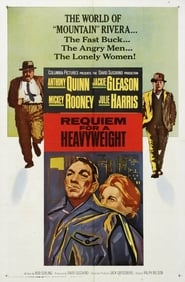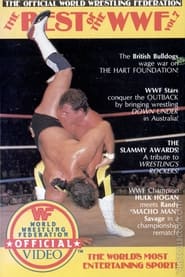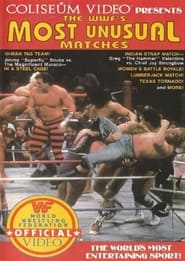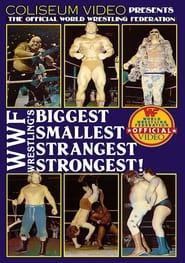William Dee Calhoun (August 3, 1934 – December 7, 1989) was an American professional wrestler, who used the professional name "Haystack" or "Haystacks" Calhoun.
Born on August 3, 1934, William Dee Calhoun grew up on a farm in McKinney, Texas; a rural suburb located in Collin County about 30 miles (48 kilometers) north of Dallas. By age 14, he already weighed 300 pounds (140 kilograms), as he routinely ate a dozen eggs for breakfast. By the time he was in his early 20s, Calhoun weighed over 600 pounds (270 kg). Legend has it that Calhoun was discovered by a traveling wrestling promoter that saw him pick up and move cows across a field. Calhoun first broke into wrestling in 1955 and he began competing for local promoter Orville Brown.
Initially performing under the name "Country Boy Calhoun", he performed in various regional territories, including Houston, Kansas City, and Canada. However, he first appeared nationally on Art Linkletter's House Party, a televised variety show where Calhoun tossed full bales of hay into a high loft. As a result of this feat, he adopted the name "Haystacks Calhoun." Recognizing the show business potential of such a gimmick, Calhoun decided to exaggerate his hillbilly persona by adopting the fictional birthplace of Morgan's Corner, Arkansas, while sporting a bushy beard, white t-shirt, blue overalls, and a genuine horseshoe around his neck on a chain. Moreover, while promoters typically did not book him for championships, he seldom lost a match. He was often booked in handicap matches and battle royals. He was matched up against fellow wrestling giant Happy Humphrey (who was billed as the heaviest wrestler in the world) in a series of highly promoted altercations at Madison Square Garden during the early 1960s. On April 14, 1961, in the Chicago International Amphitheater, he challenged Capitol Wrestling NWA United States heavyweight champion "Nature Boy" Buddy Rogers in a second attempt to take the U.S. title. This bout ended in failure when Rogers dropkicked Calhoun to the ropes and the middle rope broke and Calhoun tumbled to the concrete floor and was counted out. Calhoun had also lost his first championship bout with Rogers in New York's Sunnyside Garden Arena on January 28, 1961. He also wrestled for NWA: All-Star Wrestling in Vancouver, where he twice won the NWA Canadian Tag Team Championship with Don Leo Jonathan. In 1966 he won both the NWA Tri-State Tag Team Championship and the NWA Canadian Tag Team Championship while teaming with a young Jack Brisco and Don Leo Jonathan, respectively. Moreover, he then helped attract fans to the fledgling Northeast promotion World Wide Wrestling Federation (WWWF). On May 30, 1973, Calhoun paired with Tony Garea to defeat the Japanese duo of Mr. Fuji and Prof. Toru Tanaka for the WWF Tag Team Title. He continued working for WWWF until 1979. Calhoun's weight and declining health eventually forced him into retirement, and he was ultimately confined to a double-wide trailer after losing his left leg to diabetes in 1986. He died at age 55 on December 7, 1989.
In 2003 WWE listed him as one of the 50 greatest WWE superstars of all time. On March 31, 2017, Calhoun was posthumously inducted into the WWE Hall of Fame as a part of the Legacy Wing.
Born on August 3, 1934, William Dee Calhoun grew up on a farm in McKinney, Texas; a rural suburb located in Collin County about 30 miles (48 kilometers) north of Dallas. By age 14, he already weighed 300 pounds (140 kilograms), as he routinely ate a dozen eggs for breakfast. By the time he was in his early 20s, Calhoun weighed over 600 pounds (270 kg). Legend has it that Calhoun was discovered by a traveling wrestling promoter that saw him pick up and move cows across a field. Calhoun first broke into wrestling in 1955 and he began competing for local promoter Orville Brown.
Initially performing under the name "Country Boy Calhoun", he performed in various regional territories, including Houston, Kansas City, and Canada. However, he first appeared nationally on Art Linkletter's House Party, a televised variety show where Calhoun tossed full bales of hay into a high loft. As a result of this feat, he adopted the name "Haystacks Calhoun." Recognizing the show business potential of such a gimmick, Calhoun decided to exaggerate his hillbilly persona by adopting the fictional birthplace of Morgan's Corner, Arkansas, while sporting a bushy beard, white t-shirt, blue overalls, and a genuine horseshoe around his neck on a chain. Moreover, while promoters typically did not book him for championships, he seldom lost a match. He was often booked in handicap matches and battle royals. He was matched up against fellow wrestling giant Happy Humphrey (who was billed as the heaviest wrestler in the world) in a series of highly promoted altercations at Madison Square Garden during the early 1960s. On April 14, 1961, in the Chicago International Amphitheater, he challenged Capitol Wrestling NWA United States heavyweight champion "Nature Boy" Buddy Rogers in a second attempt to take the U.S. title. This bout ended in failure when Rogers dropkicked Calhoun to the ropes and the middle rope broke and Calhoun tumbled to the concrete floor and was counted out. Calhoun had also lost his first championship bout with Rogers in New York's Sunnyside Garden Arena on January 28, 1961. He also wrestled for NWA: All-Star Wrestling in Vancouver, where he twice won the NWA Canadian Tag Team Championship with Don Leo Jonathan. In 1966 he won both the NWA Tri-State Tag Team Championship and the NWA Canadian Tag Team Championship while teaming with a young Jack Brisco and Don Leo Jonathan, respectively. Moreover, he then helped attract fans to the fledgling Northeast promotion World Wide Wrestling Federation (WWWF). On May 30, 1973, Calhoun paired with Tony Garea to defeat the Japanese duo of Mr. Fuji and Prof. Toru Tanaka for the WWF Tag Team Title. He continued working for WWWF until 1979. Calhoun's weight and declining health eventually forced him into retirement, and he was ultimately confined to a double-wide trailer after losing his left leg to diabetes in 1986. He died at age 55 on December 7, 1989.
In 2003 WWE listed him as one of the 50 greatest WWE superstars of all time. On March 31, 2017, Calhoun was posthumously inducted into the WWE Hall of Fame as a part of the Legacy Wing.
Show more expand_more
keyboard_double_arrow_down




